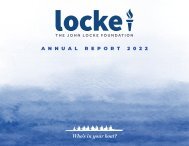Energy Crossroads: Exploring North Carolina’s Two Energy Futures
North Carolina’s Clean Energy Plan, a proposal put together by the Department of Environmental Quality at the behest of Governor Roy Cooper, calls for a 70-percent reduction of greenhouse gas emissions from electricity by 2030 and carbon neutrality by 2050. Duke Energy has submitted Integrated Resource Plans that include pathways to the Clean Energy Plan targets. Duke Energy’s Portfolio D most resembles the Clean Energy Plan, deploying wind, solar, and battery storage on an unprecedented scale. This report assesses North Carolina’s existing electricity portfolio, analyzes the changes proposed by Duke Energy’s Portfolio D, and compares that scenario to alternatives that utilize nuclear energy and natural gas to achieve emissions reduction rather than the Clean Energy Plan’s preferred wind, solar, and battery storage.
North Carolina’s Clean Energy Plan, a proposal put together by the Department of Environmental Quality at the behest of Governor Roy Cooper, calls for a 70-percent reduction of greenhouse gas emissions from electricity by 2030 and carbon neutrality by 2050. Duke Energy has submitted Integrated Resource Plans that include pathways to the Clean Energy Plan targets. Duke Energy’s Portfolio D most resembles the Clean Energy Plan, deploying wind, solar, and battery storage on an unprecedented scale.
This report assesses North Carolina’s existing electricity portfolio, analyzes the changes proposed by Duke Energy’s Portfolio D, and compares that scenario to alternatives that utilize nuclear energy and natural gas to achieve emissions reduction rather than the Clean Energy Plan’s preferred wind, solar, and battery storage.
You also want an ePaper? Increase the reach of your titles
YUMPU automatically turns print PDFs into web optimized ePapers that Google loves.
JOHN LOCKE FOUNDATION
139
APPENDIX
The Center of the American Experiment conducted eight future electricity
grid scenarios for the John Locke Foundation. Four scenarios are
based on the Duke Energy Progress (DEP) and Duke Energy Carolinas
(DEC) system and four scenarios are based on only North Carolina. Each
set includes a scenario based on Portfolio D from the Integrated Resource
Plans filed by Duke Energy Progress and Duke Energy Carolinas;
a scenario based on adding natural gas capacity to replace retiring coal
facilities without renewable additions; a scenario based on adding a
combination of nuclear capacity and combined-cycle natural gas with
U.S. Energy Information Administration-designated capital costs instead
of renewables to achieve similar carbon-free percentages to Portfolio D;
and one scenario based on adding a combination of Korean APR1400
nuclear capacity and combined-cycle natural gas instead of renewable
to achieve similar carbon-free percentages.
The assumptions, which vary from scenario to scenario, are listed below.
North Carolina Scenarios vs. Duke Energy Scenarios
Center of the American Experiment included Duke Energy scenarios for
analysis along with North Carolina scenarios. Duke Energy accounts for
the vast majority of electricity sales in North Carolina, but not all. To determine
the impact of renewable energy on electricity prices and emissions
in the entire state of North Carolina, we extrapolated the findings
from the Duke scenarios to match the electricity demand for the rest of
North Carolina electricity consumers. The author has relied primarily on
the North Carolina scenarios and has distinguished between the two
sets when necessary.
North Carolina
Annual capacity additions were based on extrapolating Portfolio B annual
additions to match Portfolio D total additions. With the exception of











